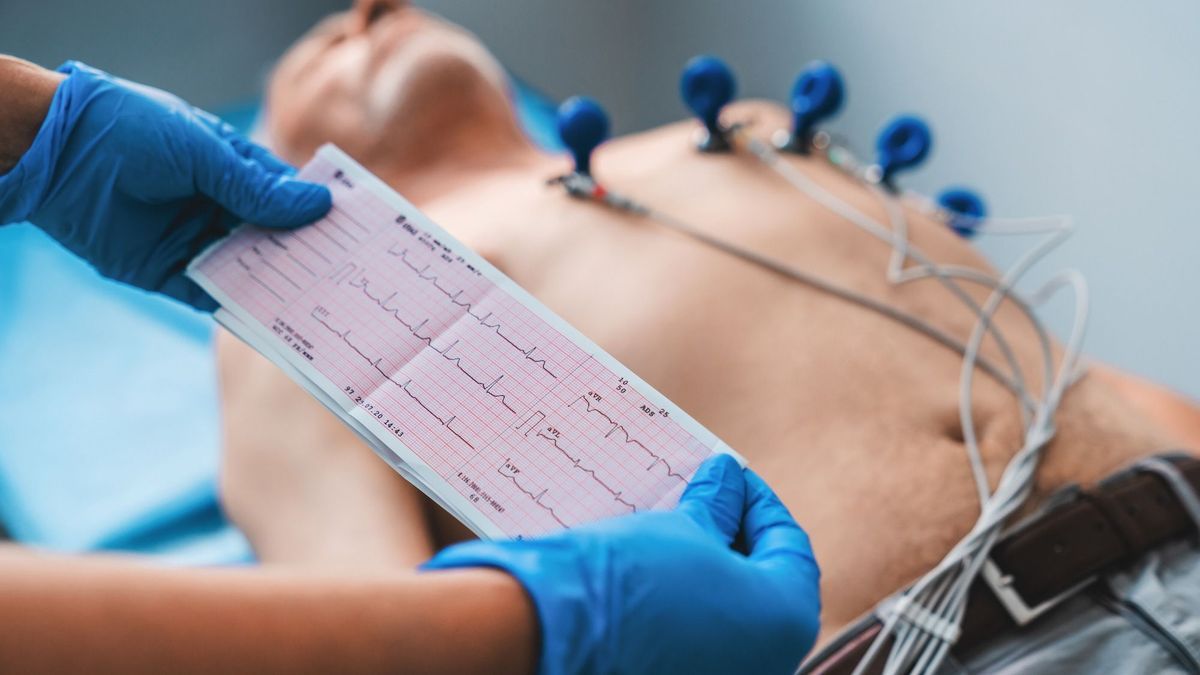
What is amyloidosis? How is it characterized and who are the patients at risk? What types of treatments can be offered after diagnosis? Elements of response with cardiologist Thibaud Damy.
Definition of Amyloidosis
“Amylosis is a rare disease in which proteins in the human body that circulate in the blood infiltrate tissues”explains Professor Thibaud Damy, cardiologist at CHU Henri Mondor in Créteil, coordinator of the national reference center for cardiac amyloidosis and head of the Amyloidosis Network. “These proteins change their conformation and cause disorganization and destruction of tissues in the human body”he adds.
Causes and origins of amyloidosis
“It’s a process that generally appears with age and gets worse the older we get., notes Thibaud Damy. However, there are hereditary forms, but they only occur after age 60. Indeed, “the fibrils will only infiltrate the myocardium as we age”, he analyzes. This reflects the intervention of other mechanisms, in particular mechanisms for cleaning deposits which, with age, fail. AL amyloidosis can occur earlier, from the age of 20, but the prevalence increases considerably with age.
The different types of amyloidosis:
There are 3 main types of cardiac amyloidosis.
AL amyloidosis, also known as primary amyloidosis
- It is linked to antibodies produced in excess. It’s about a hematological disease due, as explained by the High Authority of Health (HAS) to “an accumulation in different organs and tissues of deposits of amyloid substance made up of monoclonal light chains forming insoluble fibrils”. However, this accumulation of amyloid deposits can disrupt the normal functioning of many organs (the heart, but also the kidney or the liver).
Transthyretin amyloidosis
- This form is linked to a protein in the human body, transthyretin, responsible for transporting thyroid hormones and retinol. Here we can see a form age-relatedit appears in elderly subjects.
Hereditary ATTR amyloidosis (or hATTR or familial amyloid neuropathy
- This form is caused by a mutation in a transthyretin gene.
These three forms of cardiac amyloidosis will giveheart failure and slightly more specific symptoms from one form to another. For example, in the transthyretin of the elderly (which we call senile or wild transthyretin because there is no genetic mutation), the damage will occur earlier. They will be original osteoarticular such as carpal tunnel, narrow lumbar canal, trigger fingers, deafness, hip or knee prostheses linked to osteoarthritis. “All this is linked to the infiltration of tendons and bones by fibrinoids which will arrive before cardiac damage”reports the cardiologist.
In its hereditary ATTR form, it can also be associated with neuropathy with tingling in the feet and hands and disappearance of sensitivity.
For AL amyloidosis, we can have these same attacks, but the most frequent, according to the cardiologist, are located at the level of the mucous membranes with an increase in the volume of the tongue called macroglossia, bruising in the eyelids caused by fragility of the vessels and amyloid infiltration. “We can also find swallowing and eating problems which will lead to malnutrition and significant weight loss”he adds.
Symptoms and manifestations of amyloidosis
For the most common types, cardiac amyloidosis (linked to the infiltration of the heart by these fibrillar proteins which will modify the structure of the heart and stiffen it), “what we explain to patients is that this pathology turns the heart into stone”, indicates Professor Damy. Indeed, he deciphers, “It is nicknamed stone heart disease, because the heart is a pump, a muscle that must work and if it fails, we develop heart failure”.
The other main symptoms are, as reported by Thibaud Damy, grouped in the acronym EPOF (shortness of breath, rapid weight gain linked to edema of the feet or stomach and fatigue). Finally, other symptoms may be associated such as a rupture of the bicipital tendon, carpal tunnel, trigger fingers, and can sometimes occur up to 5 to 10 years before the heart attack.
How to treat amyloidosis?
In all forms of cardiac amyloidosis, there are now medical treatments to stop the progression of the disease. The objective: adapt cardiological treatment by limiting the intake of certain medications and prescribing others. We will also consider the mise sous anticoagulants and theimplantation d’un pacemaker to prevent cardiac complications of the disease. At the same time, we will try to treat, reduce or even cancel the production of amyloid fibrils and stabilize the protein to stop the disease.
The type of treatment will depend on the form of amyloidosis. Thus, he distinguishes, “in AL forms we will offer treatment with chemotherapy/immunotherapy to stop the production of antibodies by white blood cells.. In the case of transthyretin amyloidosis, we will try to stabilize the transthyretin protein or block its production with messenger ARMsfollowing the shapes.
Furthermore, as the cardiologist reveals, “there are new treatments within the framework of research protocols with immunotherapy antibodies whose mission is to remove amyloidosis deposits”.
When and how to get diagnosed?
The main complications
As Professor Damy reports, the risks of complications are primarily‘heart failurebut also arterial and venous embolisms, therefore AVC (strokes) andpulmonary embolism.
Prevention and risk factors for amyloidosis
According to the head of the Amyloidosis Network, there is no specific prevention. Nevertheless, he recalls the importance of adopting a healthy lifestyle (healthy and varied diet, sleep) and a regular physical activity to prevent all cardiovascular diseases and maintain good health as much as possible.
